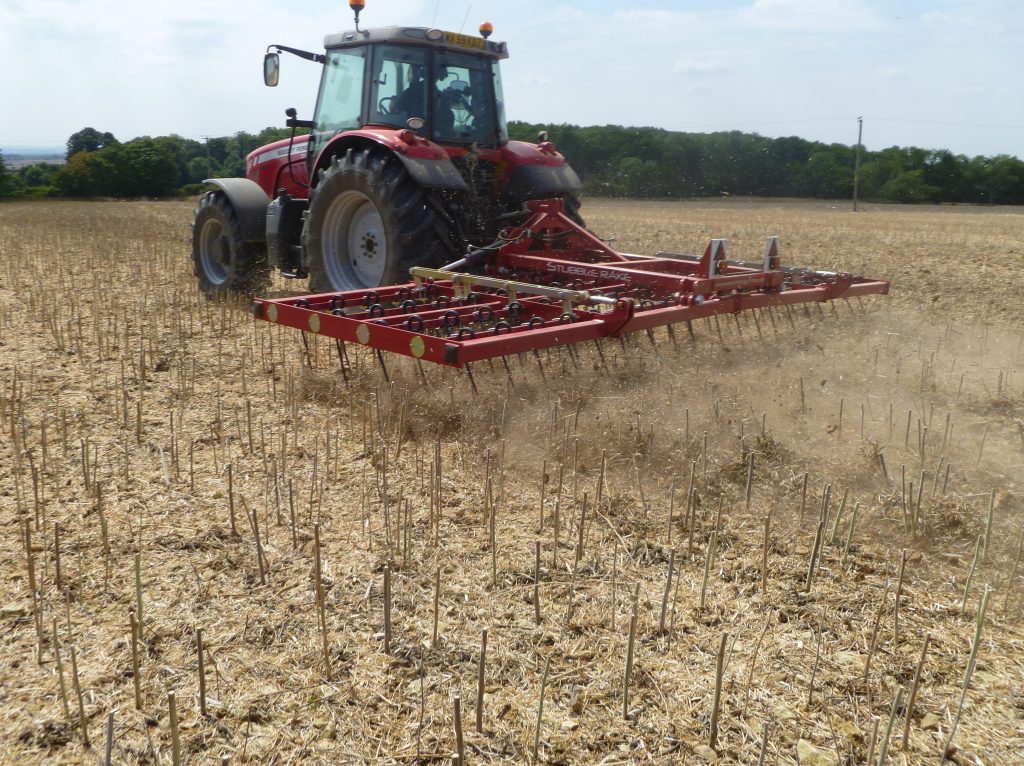Balancing grass weed and OSR volunteer management needs
17th July 2018
Cultivation immediately after harvesting has become standard practice for growers wanting the best control of problem grass weeds ahead of winter cereal drilling, but it’s about the worst thing they can do after oilseed rape.
Cultivation immediately after harvesting has become standard practice for growers wanting the best control of problem grass weeds ahead of winter cereal drilling. But it’s about the worst thing they can do after oilseed rape if they also want to deal with the volunteers that can be so problematic in arable rotations.
This is the experience of national weed management specialist, Barrie Hunt who runs the Roundup technical support service. He has no doubt that autumn is the best time to deal with both these challenges. And he has a proven way of overcoming their conflicting management needs based on the best understanding of OSR and grass weed biology.
“Volunteers are inevitable consequence of OSR growing,” he insisted. “A small amount of seed loss is unavoidable even with the best pod shatter resistant varieties, combining technologies and harvesting practice.
“This wouldn’t be a problem but for two things. First, every 10 kg/ha lost is typically more than one and a half million seeds (or around 170 seeds/m2). And second, a proportion of these can remain viable in the soil for a good 10 years.

Barrie Hunt.
“So, as well as getting in the way of your first wheat and providing an ideal environment for slugs, volunteers can seriously interfere with the management and productivity of your future oilseed rape crops. They’re also a prime culprit in the erucic acid contamination of ‘double lows’ on land once used for HEAR growing.
“On the plus side, we’re dealing with seeds specifically bred to germinate readily and reliably when at or very near the soil surface. Often – as autocasters will testify – a combination of chaff and dew are sufficient. This means we can stimulate the vast majority of shed rapeseed to grow by not burying it to anything more than a couple of centimetres. Cultivating it down any deeper will only encourage dormancy and future trouble.”
Not cultivating stubbles immediately following OSR harvesting appears to fly in the face of the best grass weed management practice. However, Barrie Hunt stresses that it need not do so if growers follow a simple ‘twin-track’ approach.
Having left OSR stubbles uncultivated for up to four weeks then spraying-off the volunteers and any very low dormancy black-grass, he recommends light tillage and consolidation to minimise moisture loss and set up a stale seedbed. This will bring-on the bulk of the grass weeds for spraying-off just ahead of drilling.
“If you have bad black-grass, ryegrass or brome you shouldn’t be drilling wheat until mid-October at the earliest,” he pointed out. “So with OSR coming-off before the end of July you have plenty enough time for this approach.
“Its great beauty is that it enables you to deal with both volunteers and grass weeds in the best possible way, without compromise.
“On the one hand, you leave any shed rapeseed open to predation by birds and mammals and get the maximum flush of small, poorly rooted volunteers especially vulnerable to glyphosate. And on the other you achieve the surface cover needed for the maximum flush of black-grass, ryegrass and sterile brome to control ahead of your wheat drilling.
“Of course, the twin track approach also helps you get rid of any soft, meadow and rye brome seed which needs surface after-ripening before burial to stimulate germination, together with perennial weeds which are best left to grow out of the stubble before spraying.
“Cultivation between glyphosate sprays is important to minimise the risk of resistance development too,” added Barrie Hunt. “As are using sufficient rates of the most active glyphosate formulations and the best application practice.
“With such unreliable post-emergence herbicide performance these days, the most effective autumn treatment is critical in managing difficult grass weeds. This makes it vital your pre-planting sprays work as hard as they can in every way.”

